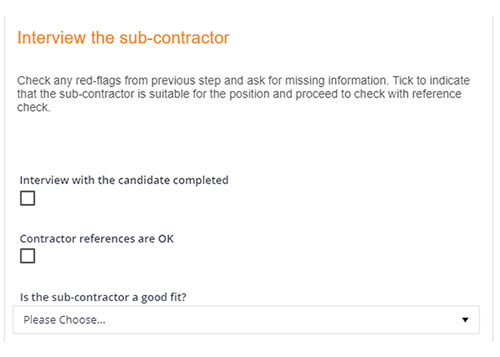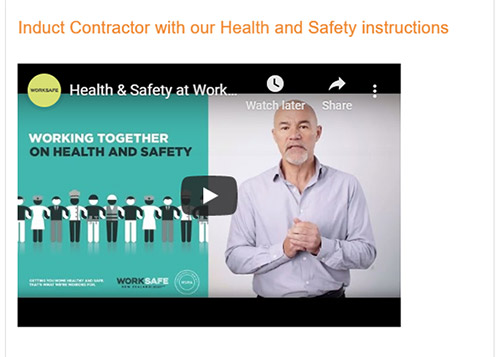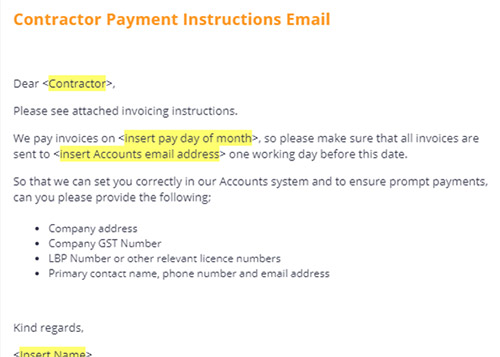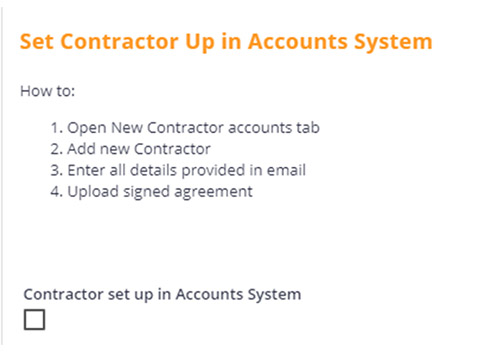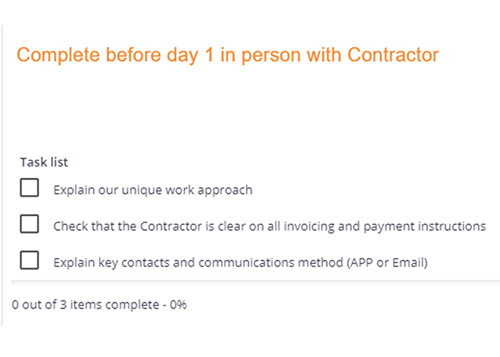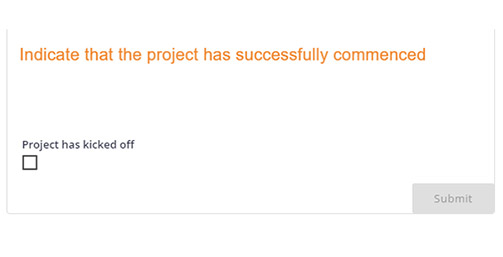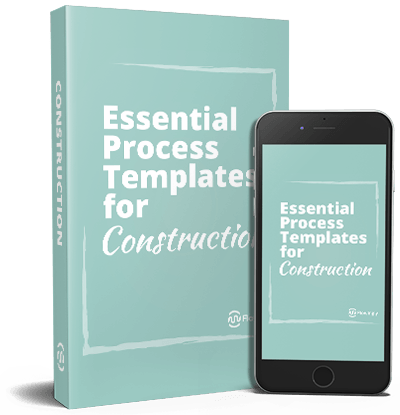Assign a New Contractor
With the inherent risks and pressures involved, it is essential to have quality processes in place for engaging contractors. There are many processes you need to manage contractors, including your tendering and delivery processes. The one we tackle here is designed to help you recruit a new contractor or subcontractor onto your books.

1. Pre-qualify Contract Applicants Administration
Before engaging into any agreements with a contractor, you’ll want to do a thorough check on their history to make sure that the relationship will be a successful one.
You may wish to look at:
- Financial statements or tax returns
- Information on recent contracts
- Payment issues
- Current safety practices
- Recent incident reports
2. Interview the Contractor & Check References Hiring Manager
Following the pre-qualification, you will want to interview the contractor and make relevant reference checks.
This provides a good opportunity to request any information that you couldn’t get during pre-qualification and to check any red flags that may have arisen.
3. Complete & Upload Agreement & Licenses Administration
This step is especially important for compliance and legislative purposes. Before progressing further with the contractor, you will want to ensure that contracts have been drawn up and signed. You will also need a copy of all relevant licenses so that you don’t run into trouble further down the track with unlicensed work.
If you are using a workflow platform like Flowingly, you would make the contract and license upload a required field. This means that at any stage you could go back and easily access this documentation for reporting or auditing purposes.
4. Perform H&S Induction with Contractor Health & Safety
Now that the pre-qualification and contractual terms have been completed, you can start onboarding the contractor. One stage of this will be the induction to your health & safety procedures.
It may be that you need to run them through standardized procedures such as Worksafe. Or potentially you need to take them through procedures specific to your organization or a certain project. Either way, it is important to keep record that this has been completed.
5. Send Payment Instructions to Contractor Finance
While the Health & Safety team is running through the H&S procedures, you will want to get the financial details in order.
This is a good opportunity to establish a relationship between the finance teams, outline your payment terms and gather the required details to setup the contractor in your accounts system.
6. Set Contractor Up in Accounts System Finance
Once you have all the details to set the contractor up as a payee, it’s time to add them to your system.
7. Meet Contractor Before Day 1 for Walk Through Hiring Manager
Before the contractor starts work on the new project, take the opportunity to meet up with them and discuss the finer details. You may want to include some intangibles, such as your approach to work, how you like your staff to interact with the community, and expectations around behaviour on site.
This is also a good chance to make sure that the payment terms are clear, and outline any key contacts, communication
methods and escalation procedures.
8. Initiate Project Project Manager
The assignment of the new contractor is now complete, and they will now be part of the project itself. The relevant documentation has been completed, the contractor has been run through your H&S induction and they are setup as a payee. What’s more, you now have a full record of the process for auditing and compliance purposes.

